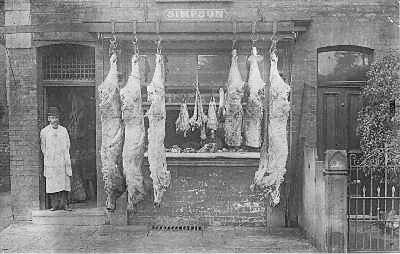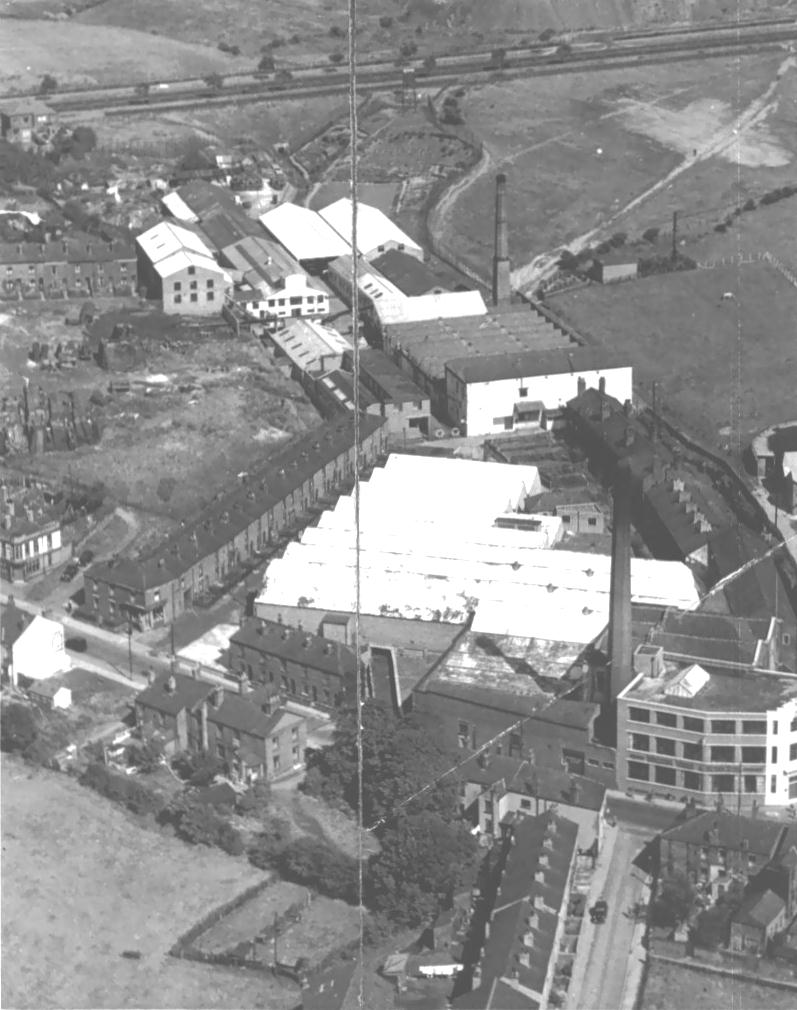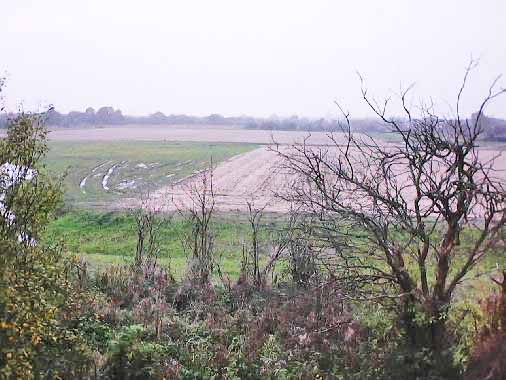20th Century expansion
A Victorian description of Boothstown refers to a ‘quaint manufacturing village’ of between 60 and 80 cottages, with a Methodist chapel, post office, mill, and two inns, and surrounded by ‘charming’ fields of wild flowers. However, Stirrup Brook was noted to have been ‘seriously polluted to the detriment of property and cattle’, and the matter referred to the Barton-upon-Irwell Rural Sanitary Authority. This was on the inspection of the brook at Leigh Road in 1888 with a view to replacing the wooden bridge with a culvert.
The tram line from Milk Street, Tyldesley to Boothstown was opened in April 1905. It was later extended to Swinton, where the Salford trams carried passengers to Manchester. The tramlines were in the centre of the road on a single track with loop systems to allow passage in both directions. They were replaced by trolley buses and petrol buses in August 1931.
In 1928 Simpson Road was built to shortcut the loop of Leigh Road through the village. The new road was named after a local councillor, Mr. Simpson, who ran the butcher’s shop next to the post office (today the shop is a café). The picture below shows Mr. Simpson around 1910.

In 1923 the 4th Earl of Ellesmere sold his Worsley estates to a consortium of local businessmen, and the Bridgewater Estates company was established. The new company had financial obligations to the Earl (and his successor) which were not paid off until 1948. The company raised money by selling some land and property, especially during the building boom of the mid-1930s. In 1933 80 acres of the company’s land were purchased by Lancashire County Council for the construction of the East Lancashire Road (A580), joining Manchester and Liverpool. The new road, officially opened by King George V, cut a swathe through the land to the north of the village, and separated Boothstown from Mosley Common and Ellenbrook.
Post-war planning legislation introduced the concept of protected green belts to curtail urban expansion, but suburban development continued. The village now displays a mix of property styles and ages, reflective of continuous development, which can be used to build up a picture of the village’s growth. The picture below, taken in the mid-20th century, shows Yates’s mill with the East Lancashire Road in the background to the north. The mill dominated the centre of the village for around one hundred years. After lying derelict for some years, the site was developed for housing in the 1990s.

The Bridgewater Estates company established a subsidiary called the Walkden Land Company in 1958 to co-ordinate the preparation of development land, including the construction of new roads and sewers. The company played an increasingly active role in development, its first scheme being in Boothstown in 1963. The success of the 54-bungalow development, and the clear potential for more sales, encouraged further plans, and several additional sites were developed in the village in the 1970s.
In 1971 the new Standfield housing development included a shopping centre and new library in the heart of Boothstown village. The Walken Land Company was renamed Bridgewater Homes.
After the significant house-building programme in the 1960s and 1970s, there was local protest in the early 1980s at plans to allocate large areas between the village and the canal, and at Ellenbrook, for further housing development.
Against the background of a discrepancy between the housing development plans of the city council, and the suggested designation by the county council of green belt land, a Boothstown residents’ group (and groups in neighbouring Worsley and Ellenbrook) campaigned against the allocation of areas of open land for housing development. The development proposals were supported by Bridgewater Estates. Following public inquiries into the plans of the city and county councils, land south of Boothstown village was designated for housing and construction went ahead.
Development continued steadily throughout the 1990s and with the loss of Booth End Farm sheep and cattle no longer grazed in the village centre.
The growth of Boothstown was matched in surrounding areas and was manifest in the dramatic rise in road traffic congestion each work-day morning. Twenty years on, housing construction continues.
Bridgewater Park
Work commenced in 2001 on the Bridgewater Park football field and parkland, near Moss House bridge in Boothstown. The facility opened in August 2003 and has two top quality full-sized football pitches and mini-soccer pitches for young children. There is now a pavilion building on the site and a car park. The facility received funding from Peel Ltd, from Viridor Waste Management (through the Landfill Trust), local community groups and Boothstown Junior Football Club. The pavilion was supported by the Football Foundation and officially opened by Norman Whiteside. The Football Club is the main user of the site. The photo below shows the Park under construction in November 2001. The sanded areas are the football pitches under preparation.

Salford Forest Park – Proposals
In October 1998 local newspapers reported proposals by Peel Estates Ltd to undertake large-scale development of the land south of the canal, especially at Malkins Wood Farm. The proposals (see map below) included the opening up of the land to wider public access and a new horseracing course on the site of Malkins Wood Farm. A planning application was submitted to Salford City Council in September 2001, and the community was invited to comment on the plans.

In autumn 2001, local residents were invited by Salford City Council to comment on the proposals, and some 1,000 response letters were said to have been received. In January 2002 two public meetings were held, one at St Mark’s in Worsley and the other at the British Legion in Boothstown. The meetings were well attended – 1,000 people were reported to have turned up, and some people were locked out of the Boothstown meeting. The local press reported that most attending were opposed to the proposals, and that disagreements between local councillors had developed along party lines. Salford City Council had to decide whether to make its own decision on the planning proposal or refer the proposal to the Secretary of State (the latter option involving a public inquiry), and some residents groups opposed to the plans began fundraising to pay for legal representation at any such inquiry.
In May 2002 a campaign group called RAGE (Residents Against Greenbelt Erosion) produced leaflets against the proposals and outlined its plans to oppose the development. The group was formed by Worsley Village Community Association, Boothstown Residents Association and Worsley Civic Trust and Amenity Society. The group aimed to make formal objections to the planning application, both to the City Council and to any public inquiry, and to organise a campaign against the proposals.
In January 2003 the local press reported that Peel planned to plant more than 24,000 new trees on a 24-acre site in Botany Bay Wood to help conserve the colony of grey herons. The planting would restore areas felled during the second world war and would be part of a revised planning proposal.
In late 2008 Salford City Council rejected the plans for the racecourse development. Opponents feared traffic and pollution problems. An appeal by Peel led to a planning inquiry, commencing in April 2009. In January 2010 the Secretary of State for Communities and Local Government rejected the appeal ruling that, “The proposal would cause significant harm to the purposes of including land within the Green Belt, in particular safeguarding the countryside from encroachment, checking unrestricted sprawl and assisting urban regeneration. I consider there would be very clear and very substantial harm to the Green Belt.”
Acknowledgements
This web page was written by Tony Smith. The story of the Bridgewater Estates company and its role in suburban development is told in The Bridgewater Heritage by Christopher Grayling, Bridgewater Estates plc, 1983. Photograph of Bridgewater Park by Tony Smith copyright (c) 1997. Black and white photographs were kindly supplied by Walkden Library.